We all know that we should be trying to eat a little more healthily. And one of the best ways to do this is to plan your weekly grocery shop in advance based on the meals you plan to cook. Simple right? The reality is most of us don’t do this and end up eating on the fly. Spending more money on groceries than we need to and probably not eating all that healthily to boot. We’re here to help. Follow our steps to successful meal prepping and, in no time, you’ll save money by buying your groceries in bulk, while still eating healthily.
What is meal prepping?
Meal prepping is when you prepare your breakfast, lunch and dinner in advance, usually for the week ahead. You can prepare entire meals to be reheated or simply prepare the ingredients lined to speed up the cooking process. Either way, you’ll save time, money and resist the urge to buy food on the run which is almost always the healthier option.
There are a few different approaches you can take to meal prepping - all of them work a treat. See which one works best for you.
1. Batch cooking
By making a large batch of food such as soup, curry or chilli con carne, you can easily cook a lot of food all at once, then portion and store for later meals. Batch cooking works well if you’re feeding lots of mouths, or you don’t mind eating the same meal a few times a week. Batch cook a few different options and then alternate between them throughout the week to keep thing a bit more interesting.
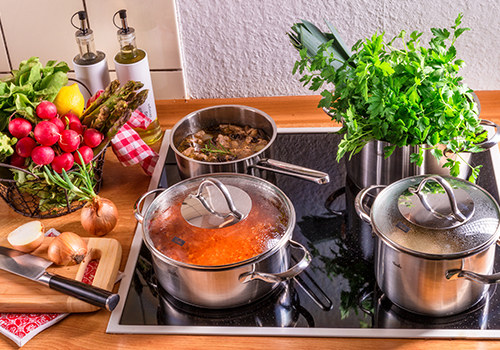
2. Portioned meals
Fill up single serve containers with meals like baked chicken and rice. Then, you can grab and go whether it’s for breakfast, lunch or dinner. An example of this would be salads. You can prepare a simple couscous salad and cooked chicken breasts on Sunday, and then have it for lunch on Monday and Tuesday.
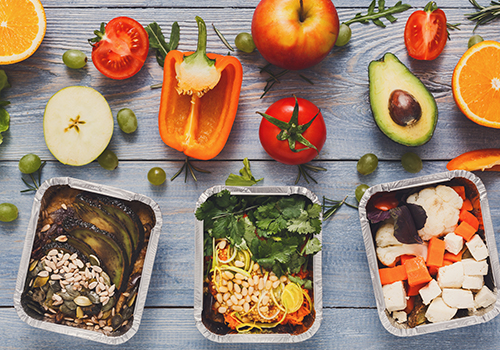
3. Prepared ingredients
If you prefer to serve and eat as soon as a meal is cooked, you can meal prep by chopping and pre-cooking some ingredients. This way, the prep time on your dinner is much shorter.
Store prepared ingredients separately to avoid cross contamination of flavours. You also need to be mindful of which ingredients are suited to prior preparation, and how they should be stored.
For example, potatoes should be submerged in water, then refrigerated, to prevent discolouration. Ingredient prep is also perfect for slow cooker meals. You can easily throw your ingredients together in a bag, freeze them, defrost the night before and pop it all in the slow cooker in the morning.
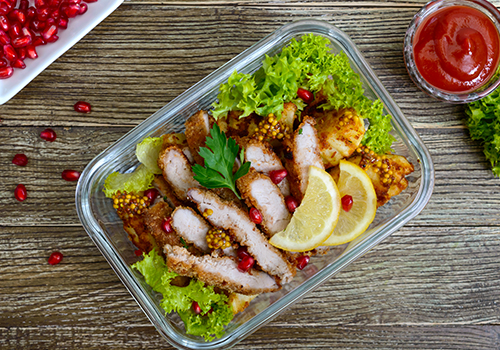
Benefits of meal prepping
Of course, saving time is the key reason to meal prep — but there are 3 other main benefits to consider.
1. Eat healthier
When you already have your meals prepped, you’re less likely to turn to fast food, because you have a healthier homemade option right there in your fridge or freezer.
That said, when it comes to food safety there are some steps you need to take.
- The Ministry of Primary Industries recommends letting food cool first to avoid raising the temperature of other stored food. Portion out food into single serving containers and leave them to cool to room temperature, for no more than two hours. Then, pop a lid on them and chuck them in the fridge or freezer.
- Don’t go overboard - overfilling your fridge or freezer can cause food to not be cooled properly, or defrost.
- Lastly, pay attention to how long you’re storing food for. How long your food lasts in the fridge will depend on what you’re cooking, but a general rule of thumb is two days. Frozen meals will last for years, but may degrade in quality after a few months.
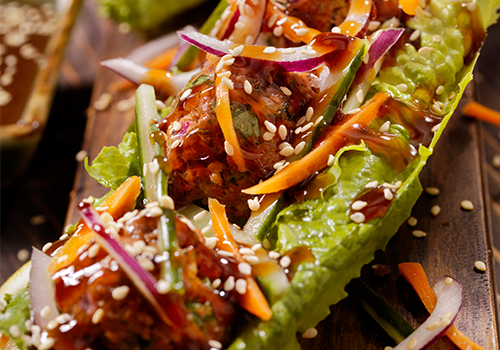
2. Minimise waste
By preparing and freezing your meals in advance, you can cut down on food waste. Less food waste saves you money in the long run (see below) and is also better for the environment.
3. Save money
If you’re buying less fast food and not letting the produce you buy spoil, that’s going to mean more savings in your pocket. When meal prepping, you’ll be doing your grocery shop each week with a plan for every ingredient. Sticking to your meal plan means you don’t let any ingredient go to waste, and you can shop more strategically. Of course, you’ll also save money on takeout when you have meals ready to go.
Here are a few tips to help you save money when meal prepping:
- Use up what you already have. Nothing saves you money quite like using up what you already have. Incorporate frozen meats and veggies from your freezer into your meal prepping, and don’t be afraid to use up last week’s ingredients if they’re still good.
- Plan your meals around PAK’nSAVE weekly deals. Take advantage of our extra low prices to stock up on your favourite meats and produce each week.
- Choose meals with similar ingredients. You can often save money by using the same ingredient in different ways. For example, you can chop up half a cauliflower for a stir fry, and blitz up the other half to make cauliflower rice.
- Use frozen or canned ingredients. Frozen or canned vegetables, like peas, corn or tomatoes are a great way to cheaply incorporate healthy foods into your meal prepping.
Is meal prepping right for me?
Meal prepping is a fantastic way to take control of your diet, how much you spend on groceries and time, but it does have a few things to consider. First of all, meal prepping requires a bit of work to get the ball rolling. You need to take some time to work out how you like to meal prep, what recipes you enjoy and when you’ll actually do the prep work.
The nature of meal prepping often means that you’ll be eating a lot of the same meals and often they’ll be reheated or cold. If you value variety or freshly cooked food, meal prep might not be right for you. Of course, there are ways to spice your meal prepping up, such as choosing only to prep ingredients, or changing up your spices and sauces every now and then.
How to meal prep for one week
Meal prepping is super simple, but it can seem complicated or difficult before you get started. Here’s a step-by-step guide to getting your weekly meal prep off to a flying start.
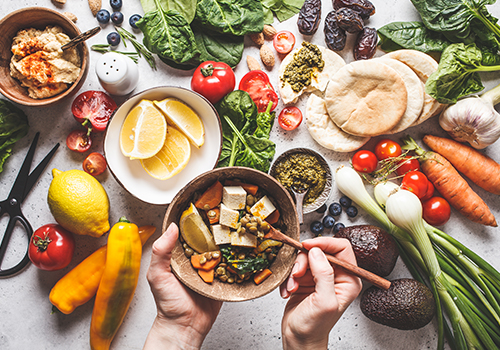
Step one: Work out how you like to meal prep
Start by working out what meal prepping looks like to you. Are you a batch cooker, or are you more interested in having your ingredients pre-chopped and ready to go on a work night? It also helps to think about what meals you’ll be prepping for. Breakfast, lunch and dinner can all be prepped in advance, but it’s a lot to manage when you’re just getting started. Make life easier by picking one meal, and working out how many meals you need to prepare for.
Remember, there might be nights where you have plans, or work lunches that keep you from eating a prepped meal. And of course, the number of mouths you’re feeding should play a part in this early planning.
Step two: Get the right containers
If your tupperware draw is a mess, you’re not alone! That said, meal prepping relies on good quality containers. Because you’re storing a lot of food, you need to be sure your vessels are clean, secure and airtight. You’ll also want to be sure your containers will fit nicely in your fridge or freezer. Buying tupperware in consistent sizes means they’ll stack nicely and maximise your space.
Finally, think about your containers in transit. Is the lid secure? Are any liquids likely to seep out into your bag on the way to work?
Step three: Create a meal plan
Now you should know how you’ll be meal prepping and just how many servings you need to prepare for. So, it’s time to kick things off by choosing the recipes that get your family excited to eat.
The best way to start planning your meals for the week is to look at what ingredients you already have kicking around. Then, look for the best deals on fresh proteins to help you build your meal plan. When choosing recipes, you also have to think about how you’ll eat your meals. If you’re prepping lunches in advance, will you have the means to reheat them at work or school?
For more inspiration, be sure to check out our great range of recipes suitable for meal prepping below.
Step four: Grocery shop
With your meal plan in place, figure out what you need to buy. When building your shopping list, it helps to group your ingredients together. Most supermarkets have their produce section at the front, so start by listing all the produce you need, followed by other fresh foods like seafood, meat and dairy, and then your dry goods.
Another great idea is to take advantage of online shopping with PAK’nSAVE. Our click & collect service keeps things super simple. Just add everything you need to your cart, pick your timeslot and store and then we’ll collect all your ingredients for you to pick up at your selected time.
Step five: Get meal prepping!
Choose a time to get in the kitchen at the start of the week and kick off your meal prepping. Most people choose to do their prep work on Sunday, so they’re set for the week.
If you prefer to keep ingredients fresher, you can instead prep on both Sunday and Wednesday, and prepare a smaller amount of food. Of course, any days that suit you are absolutely fine - just make sure you have enough food until your next prep day.
Meal prepping tips for beginners
1. Start small
Don’t try to do too much at once. When you’re just getting started, pick a single meal of the day like dinner, for example, and stick to that for meal prepping.
You can always ramp up your meal prep later, but if you bite off more than you can chew you might find it hard to enjoy meal prep.
2. Keep meals simple.
There’s no need to be fancy with your meal prep. Don’t test yourself or try out complicated new recipes. Fall back on your favourites or find recipes with minimal steps and ingredients.
If you have to prepare a lot of meals at once, you want each one to be easy to make.
Take a look at our quick and easy recipes for some simple inspiration.
3. Use your slow cooker.
A slow cooker can be your best friend when it comes to meal prepping. You can slow cook a big batch on Sunday and freeze portions for weekday meals.
Or, assemble a slow cooker recipe in a snaplock bag, freeze it raw and just pop it in the slow cooker on the morning of the day you want to eat it.
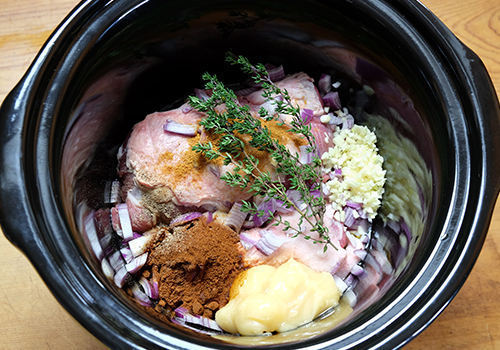
4. Make time for meal prep.
You have to make time for meal prep. It can take a little bit longer than just cooking one meal. The idea is that you spend some extra time upfront to enjoy a lot more free time during the week.
Allowing yourself a few hours in the weekend to meal prep can make your weekdays much easier.
5. Cook balanced meals you love.
One of the best benefits of meal prepping is that it helps you stay in control of your diet. Of course, you still have to choose balanced meals. Make sure your meal plan is full of bright, colourful vegetables and lean proteins.
At the same time, you’re not going to enjoy meal planning if you don’t like the food you’re cooking, so don’t feel compelled to only serve up bowls of kale.
The best ingredients to use in meal prep:
Vegetables
- Starchy root vegetables like potato, kumara, pumpkin, parsnip, swedes. Store uncooked, chopped starchy vegetables in water to prevent discolouration.
- Crisp vegetables like fresh celery, cabbage, carrots or capsicum.
- Hardy greens such as kale, undressed salad leaves and broccoli. When cutting or tearing leaves in advance, store them in a container with a wet paper towel to stop them drying out.
- Frozen veggies make meal prep extra easy. From peas and corn to pumpkin and cassava, PAK’nSAVE’s range of frozen vegetables has you covered.
Fruit
- Whole fruits last better in the fridge. Avoid using chopped fruit in your meal prep, as they can spoil quite quickly.
- Some crisp fruit like apples or pears can last overnight in the fridge with a bit of lemon juice on top to prevent browning but should be used soon. Otherwise, you can freeze them to use later in a boysenberry and apple crumble.
- Portion up smoothie ingredients like bananas, berries and yogurt into freezer-safe bags for easy grab-and-go smoothie packs.
- You can also break down your mandarins or strip grapes off the stem and store them in a container in the fridge for easy, healthy snacking or including in a breakfast parfait. Just grab a handful and dig in.
Grains, pulses, nuts and seeds
- Cooked grains like rice, quinoa and couscous can last a few days in the fridge and are great to have on hand for salads or to portion out as sides for other meals. They also freeze well.
- Cooked pulses or legumes like chickpeas and lentils can last most of the work week in the fridge, usually three to five days.
- Pay attention when storing nuts and seeds. Chia, when soaked for a breakfast pudding can last all week in the fridge, but other ingredients like sliced almonds will go soggy and tasteless. Keep any nuts and seeds that should stay crunchy in the cupboard and add to your meals just before eating.
Different meats and proteins to use in meal prep
You can meal prep with most meats. We’ve gone into a little more detail about each protein below. Why not also check out our tips for getting more from your meat?
Chicken
Chicken is a popular option for meal prepping, because it’s relatively affordable and you can make it last up to four days in the fridge.
The best cuts of chicken for meal prepping are boneless and skinless breasts or thighs. While many people prefer bone-in cuts because they hold more flavour, they’re a bit less convenient for work lunches, for example. Meanwhile, chicken skin, although delicious when fresh, tends to go soggy when stored in the fridge. Of course, you can still enjoy drumsticks or bone-in thighs in a curry or casserole when meal prepping, but you might prefer to cut the skin off before cooking.
For lots of great ways to prepare chicken for your week’s meals, take a look at our chicken recipes.
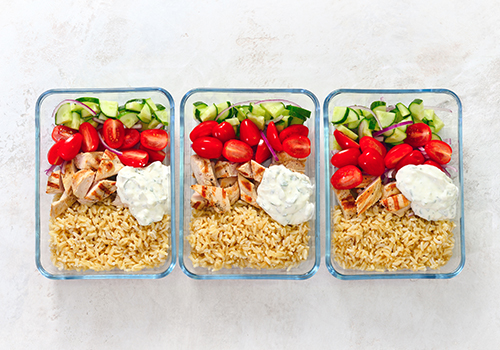
Beef
Beef is right at home in a stew slow cooked at the start of the week, or left to marinate in the fridge for a day before hitting the barbecue to finish off dinner on the night.
When choosing beef for meal prep, you may want to avoid frying steaks like rump, sirloin or scotch. These are wonderful, tender cuts but are often best eaten fresh. However, if you still want steak in your diet, you can prep your sides in advance and then simply fry your steak just before eating — and any leftovers can go in a steak salad the next day.
You can also choose tougher cuts like a skirt steak, and let it marinate for a day or two. This is a bit of prep that gives you tender, deeply flavoured steak perfect for tacos or a tasty beef bowl. Finally, don’t forget about beef mince. There are lots of great recipes for batch cooking that use beef mince, such as chilli, bolognese or even a Korean-style mince beef bowl.
Lamb
Don’t underestimate lamb for meal prep. A single lamb leg can give you a whole lot of meat for different meals throughout the week. Simply roast a lamb leg in your favourite spices, and slice the meat for sandwiches or salads. Or consider slow roasting a lamb joint in passata, olives and capers for an Italian-style ragu, perfect for serving up on a weeknight with your favourite pasta.
Lamb mince works perfectly well too. Season it up with your favourite spices and serve it in a tasty pita or on top of a flatbread for a Greek-style pizza.
Fish and seafood
Seafood is a little more challenging for meal prep, because it really is best eaten fresh (and no one likes to be around when someone’s reheated fish in the office microwave!).
Because fish cooks fairly quickly, you can easily freeze your fish fillets raw and simply defrost them in the fridge during the day, so they’re ready to be quickly pan fried or baked when you get home. And of course, you can serve it with some fully prepped sides. White fish tends to lose a little flavour when eaten later, so fatty fish like salmon is a great option. Just be sure to eat your fish within two or three days after cooking. Precooked frozen shrimp is another way to add more seafood into your meal plan. Keep them in the freezer and defrost single portions in the fridge the night before you plan to eat them.
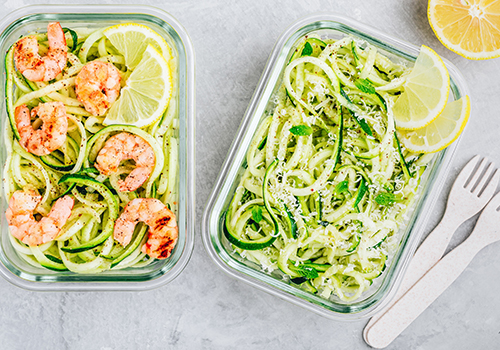
Vegetarian proteins
Here are a few ideas for including protein in your meal prep without meat:
- Hard boiled eggs keep in the fridge for up to a week. Keep them in their shells for the best freshness.
- Legumes like black beans and lentils can be used to make patties and meatballs that will freeze nicely until you’re ready to cook and eat.
- Tofu can hold up in your fridge for half the week after cooking, so it’s a great one to have in pre-portioned salads, stir frys or satays.
Storing and eating your prepped meals
How long does prepped food last?
As a good rule of thumb, most foods last two to three days in your fridge. Others, like hard boiled eggs, may last longer, but it always pays to check the label on your food and follow any advice there. Check out our tips on how to make your veggies last longer.
How can I portion my food for grab-and-go meals?
If you’re prepping for breakfast or lunch, you probably want something you can take from the fridge and go without any mucking around. Buy a good number of containers that fit the amount of food you need in a single meal. The exact amounts will depend on your personal dietary needs, and you should consult with a doctor or dietician about this.
When meal prepping, keep these containers out on your bench and start to portion food into them as soon as it’s cooked. Keeping them all out helps you see how much food you’re putting into each container, for consistent portion sizes through the week.
How do I freeze my prepped meals?
One great way to do meal prep is to prepare some shorter shelf life meals for the first half of the week, and freeze others to defrost and eat on Thursday and Friday.
You can freeze most ready-to-go meals, but green salads often don’t do well when frozen. As mentioned earlier, you can also freeze uncooked meals, such as stews and casseroles. With all the ingredients together in a bag, simply pop them in the freezer. Then, defrost in the fridge the night before. Finally, continue following the recipe (usually putting your ingredients in a slow cooker or casserole pot and cooking!).
Delicious, nutritious meal prep ideas
Check out these tasty recipes from PAK’nSAVE that will put more flavour on your table and more money in your savings.
Breakfast meal prep ideas
Lunch meal prep ideas
- Chicken and burghul salad
- Salmon rice paper rolls
- Corn fritters
- Mini pizzas
- Chicken breast fillet with Italian tomato salad
- Teriyaki chicken donburi on rice
Dinner meal prep ideas
- Beef and bean spaghetti bolognese
- Cottage pie
- Easy fried rice
- Beef and vegetable stew
- One pot Italian bake
- Cheese, leek and chorizo frittata bake
- Hearty vegetable soup
Looking for more inspiration for your work lunches? Check out our list of workday lunch recipes perfect for meal prepping.
